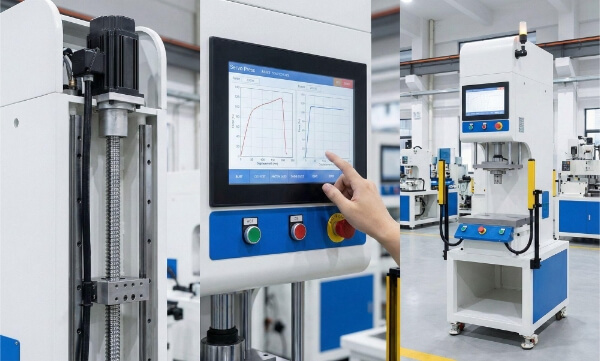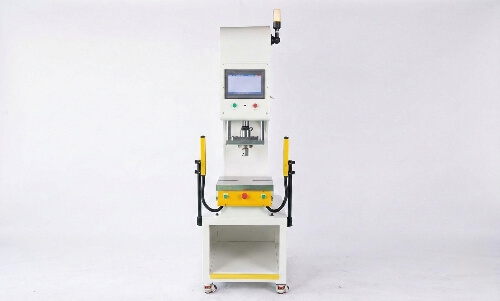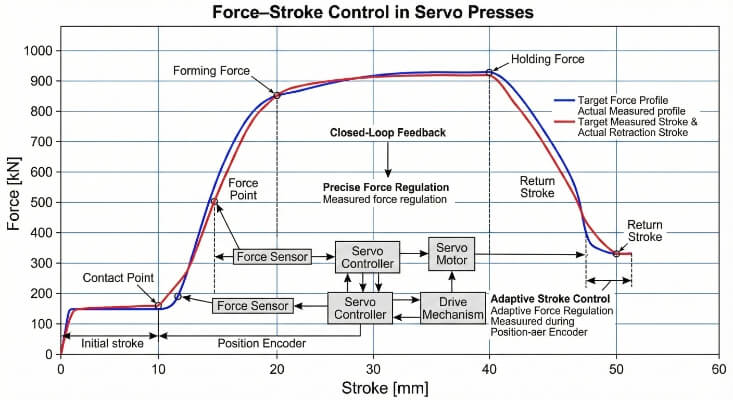Las industrias modernas necesitan materiales que equilibren resistencia, coste y aspecto. Muchos profesionales se enfrentan a precios más altos y exigencias de calidad más estrictas. Los proyectos suelen requerir un metal resistente pero fácil de moldear o procesar. El acero inoxidable 201 es una opción práctica para las empresas que desean durabilidad a un coste menor. Ayuda a las empresas a afrontar estos retos sin perder calidad ni aspecto.
Muchas personas eligen el acero inoxidable 201 porque reduce los costes sin dejar de ofrecer un rendimiento decente. Siga leyendo para saber por qué destaca el acero inoxidable 201.
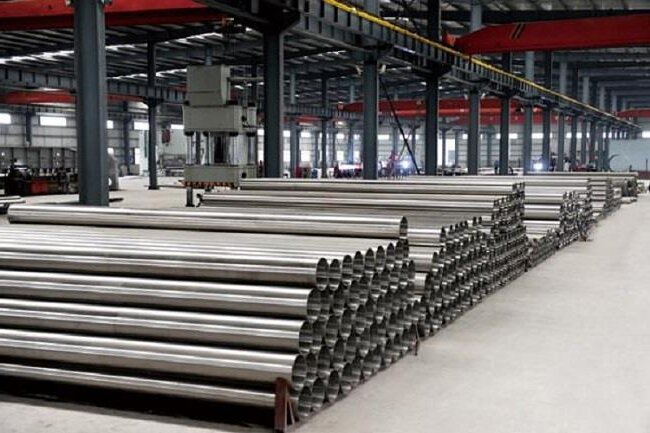
¿Qué es el acero inoxidable 201?
El acero inoxidable 201 pertenece a la serie 200 de aceros inoxidables austeníticos. Contiene menos níquel que el 304, pero añade más manganeso y nitrógeno para compensar. Este cambio ayuda a reducir el coste, manteniendo gran parte de la resistencia y ductilidad necesarias. La composición estándar incluye alrededor de 16-18% de cromo, 3,5-5,5% de manganeso, 4-6% de níquel y pequeñas cantidades de nitrógeno y carbono.
Esta calidad es amagnética en estado recocido. Sin embargo, puede volverse ligeramente magnético cuando se trabaja en frío. No está pensado para entornos de alta temperatura o corrosión, pero resiste bien el uso general en interiores o en exteriores.
Composición química
La composición química del acero inoxidable 201 le confiere su resistencia y su ventaja económica. Cada elemento influye claramente en el comportamiento del metal durante el conformado, la soldadura y el uso.
Elementos clave de aleación
Los principales elementos del acero inoxidable 201 son
- Cromo (16-18%) - Mejora la resistencia a la corrosión y ayuda a formar una capa superficial pasiva.
- Níquel (4-6%) - Añade ductilidad y tenacidad. Menos níquel significa menor coste, pero también menor resistencia a la corrosión.
- Manganeso (3,5-5,5%) - Sustituye parte del níquel. Ayuda a estabilizar la estructura austenítica.
- Nitrógeno (hasta 0,25%) - Aumenta la resistencia y ayuda a estabilizar la austenita.
- Carbono (hasta 0,15%) - Añade dureza, pero en exceso puede reducir la resistencia a la corrosión.
- Hierro (equilibrio) - Constituye la mayor parte de la aleación.
Papel del manganeso y el nitrógeno
El manganeso y el nitrógeno son sustitutos clave del níquel en el acero inoxidable 201.
- Manganeso aumenta la resistencia y la tenacidad. Favorece la fase austenítica, ayudando a que el acero siga siendo no magnético tras el recocido. También ayuda a reducir los costes de producción al sustituir al costoso níquel.
- Nitrógeno mejora la resistencia y el límite elástico sin hacer que el metal se vuelva quebradizo. Aumenta en cierta medida la resistencia a las picaduras y ayuda a mantener la estructura austenítica.
Propiedades mecánicas
El acero inoxidable 201 es resistente y fiable. Funciona bien en formando, estampadoy tareas estructurales. Puede soportar la presión y mantener su forma después del moldeado.
Resistencia y dureza
El acero inoxidable 201 es más complejo que el 304 cuando se trabaja en frío. Puede soportar fuerzas repetidas y mantener su forma, por lo que es útil para piezas que necesitan resistencia y ligereza. Dependiendo de cómo se procese, su dureza Brinell suele oscilar entre 200 y 250 HB.
El mayor nivel de carbono ayuda a aumentar la dureza, pero puede hacer que el metal sea un poco menos flexible. Esta compensación suele merecer la pena en piezas como soportes, abrazaderas y otros elementos sometidos a desgaste.
Resistencia a la tracción y al límite elástico
En su estado blando, recocido, el acero inoxidable 201 ofrece:
- Resistencia a la tracciónalrededor de 750 MPa (109 ksi)
- Fuerza de producciónalrededor de 275 MPa (40 ksi)
Después de trabajar en frío, estos valores suben:
- Resistencia a la tracciónpuede superar los 1000 MPa (145 ksi)
- Fuerza de producciónpuede superar los 500 MPa (72 ksi)
Esta resistencia adicional hace que el 201 laminado en frío sea una buena elección para piezas fabricadas por prensado o estampado. Mantiene las formas estrechas y los detalles finos.
Comportamiento de endurecimiento del trabajo
El acero inoxidable 201 se fortalece cuando se dobla o se le da forma. Esto ocurre mediante el trabajo en frío, por lo que no necesita tratamiento térmico. A medida que se le da más forma, aumenta su resistencia.
Pero a medida que se endurece, también se vuelve menos flexible. Si se dobla demasiado o con demasiada fuerza, puede agrietarse. Utilizar las herramientas adecuadas y respetar los límites de curvatura ayuda a evitar problemas.
Su capacidad para endurecerse durante el conformado lo convierte en un material excelente para piezas estampadas, molduras y estructuras de soporte que necesitan una mayor resistencia.
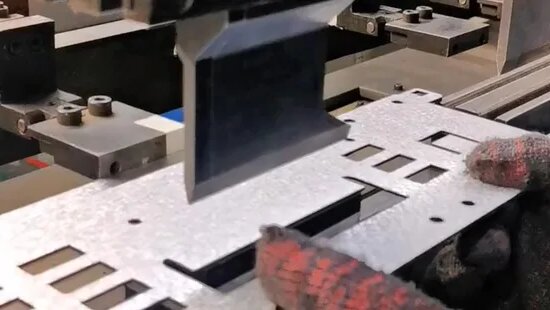
Resistencia a la corrosión
El acero inoxidable 201 ofrece una buena resistencia básica a la corrosión, especialmente para uso en interiores o exteriores suaves. Resiste la oxidación en condiciones secas o ligeramente húmedas, pero su comportamiento varía en función del entorno.
Comportamiento general frente a la corrosión
El acero inoxidable 201 forma una capa pasiva de óxido de cromo que lo protege de la corrosión. Esto funciona bien en entornos típicos de interior, como cocinas o zonas de almacenamiento. El contenido de cromo (16-18%) ayuda a resistir la oxidación y la corrosión leve.
Sin embargo, al contener menos níquel que el 304, su resistencia a la corrosión no es tan fuerte en entornos agresivos. El mayor contenido de manganeso también puede reducir su capacidad protectora con el tiempo si se daña la superficie.
201 resiste bien en ambientes secos o con poca humedad. Se utiliza a menudo en muebles, molduras, electrodomésticos y otras piezas que no se enfrentan a productos químicos agresivos ni a la humedad a largo plazo.
Comportamiento en medios húmedos, salinos o ácidos
En condiciones salinas, húmedas o ácidas, el acero inoxidable 201 tiene una resistencia limitada.
- Agua salada puede provocar picaduras y óxido superficial, especialmente cerca de zonas costeras o en uso marino.
- Entornos húmedos aumentan el riesgo de corrosión si la superficie no está bien acabada o sellada.
- Productos químicos ácidos puede atacar la superficie más rápidamente que el acero inoxidable 304 o 316.
El 201 puede no ser la mejor opción para uso exterior o industrial, donde el metal puede estar expuesto al agua o a agentes corrosivos. El acero inoxidable de grado superior, como el 304 o el 316, es más seguro.
Aun así, para las piezas de interior o la exposición a corto plazo, la 201 ofrece un sólido equilibrio entre precio y protección.
Propiedades magnéticas
El comportamiento magnético del acero inoxidable 201 puede cambiar dependiendo de cómo se procese. Su magnetismo depende de la estructura interna del metal y de si se ha trabajado en frío.
¿Es magnético el acero inoxidable 201?
En su estado recocido (ablandado), el acero inoxidable 201 es fundamentalmente no magnético. Esto se debe a que tiene una estructura cristalina austenítica, que normalmente no admite el magnetismo.
Sin embargo, esta propiedad no magnética es menos estable que en las calidades con alto contenido en níquel, como el 304. El menor contenido de níquel del 201 hace que su estructura sea más propensa a desplazarse cuando se somete a tensión o se moldea.
Así, aunque las láminas de 201 frescas parezcan no magnéticas, pueden reaccionar de forma diferente tras su fabricación.
Cómo afecta el trabajo en frío al magnetismo?
El trabajo en frío cambia la estructura del metal, por ejemplo flexión, rodanteo estampación. Cuando el acero inoxidable 201 se trabaja en frío, parte de su estructura austenítica se transforma en martensita, que es magnética.
Como resultado:
- Cuanto más se deforma el metal, más magnético se vuelve.
- Las piezas muy conformadas o embutidas a partir de 201 pueden mostrar una clara respuesta magnética.
Esto significa que las piezas fabricadas con acero inoxidable 201 pueden empezar siendo no magnéticas, pero volverse ligera o totalmente magnéticas después del conformado. Si el magnetismo afecta a su aplicación, este cambio debe tenerse en cuenta durante el diseño y la producción.
Formabilidad y fabricación
Por su resistencia y ductilidad, el acero inoxidable 201 se utiliza mucho en operaciones de conformado. Funciona bien en muchos procesos de fabricación, pero necesita un control cuidadoso durante la soldadura.
Rendimiento de plegado, embutición y estampado
El acero inoxidable 201 tiene una buena conformabilidad, especialmente en estado recocido. Se puede doblar, estirar o estampar para darle formas complejas.
- Doblar: Cuando se utilizan radios de curvatura adecuados, el acero se dobla limpiamente sin agrietarse y mantiene bien su forma después del conformado.
- Dibujos profundos: Adecuado para embuticiones superficiales y medias. Para trefilados intensos, el 304 puede rendir mejor debido a su mayor ductilidad.
- Estampación: Su elevado índice de endurecimiento por deformación es una ventaja. El material se fortalece a medida que se moldea, lo que ayuda a crear piezas duraderas.
Soldabilidad
El acero inoxidable 201 puede soldarse con métodos estándar como TIG, MIG o soldadura por puntos. Pero hay que tener en cuenta algunas cosas:
- El mayor contenido de carbono aumenta el riesgo de corrosión intergranular tras la soldadura. Esto ocurre si la zona de soldadura se trata de forma inadecuada o el aporte térmico es demasiado elevado.
- Pueden producirse grietas si las juntas no están bien diseñadas o el enfriamiento es demasiado rápido.
- La limpieza o decapado posterior a la soldadura puede ayudar a restaurar la resistencia a la corrosión en la zona afectada por el calor.
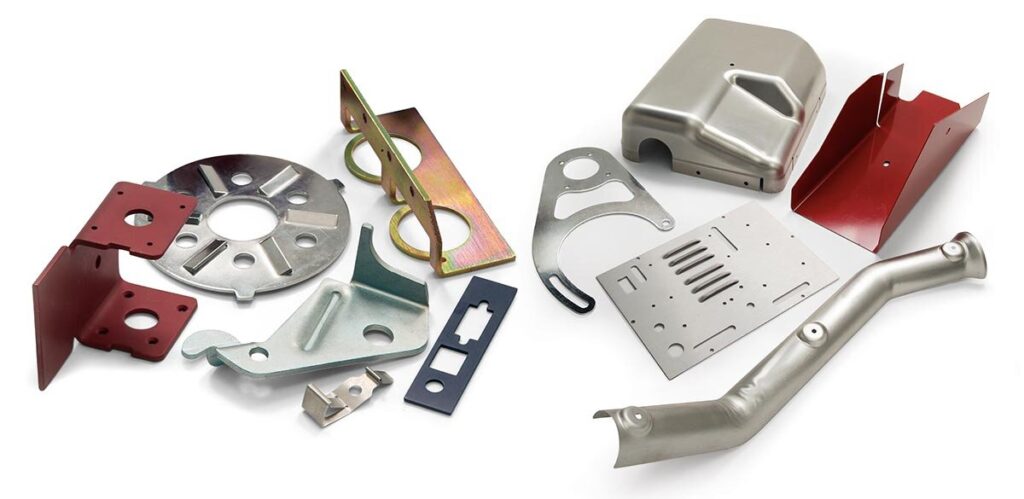
Resistencia al calor
El acero inoxidable 201 puede soportar un calor moderado, pero no está hecho para temperaturas extremas. Su bajo contenido en níquel limita su rendimiento cuando se expone a altas temperaturas durante periodos prolongados.
Temperaturas máximas de funcionamiento
El acero inoxidable 201 puede funcionar con seguridad en torno a los 600-800°F (315-425°C). Más allá de este rango, el metal empieza a perder fuerza y resistencia a la corrosión.
No debe utilizarse en aplicaciones que requieran una exposición prolongada al calor por encima de 800 °F. La descamación y la oxidación aumentan a temperaturas más altas, y la estructura se vuelve menos estable.
Rendimiento a altas temperaturas
Cuando se expone al calor, acero inoxidable 201:
- Mantiene su forma y resistencia mejor que el acero dulce
- Pierde resistencia a la corrosión más rápidamente que el 304 o el 316
- Presenta cierta decoloración u oxidación superficial si no se protege adecuadamente.
Limitaciones del tratamiento térmico
El acero inoxidable 201 no puede endurecerse mediante tratamiento térmico. Es una aleación austenítica no endurecible, por lo que el calor por sí solo no mejorará su resistencia ni su dureza.
La única forma de aumentar su resistencia es mediante el trabajo en frío, como el laminado o el curvado.
Ventajas del acero inoxidable 201
El acero inoxidable 201 es una elección inteligente para muchos proyectos en los que el coste, la resistencia y el aspecto son importantes. Ofrece una potente combinación de rendimiento y ahorro para fabricantes e ingenieros.
Relación coste-eficacia
Una de las ventajas más significativas del acero inoxidable 201 es su menor precio. Utiliza menos níquel que el 304, sustituyéndolo por manganeso y nitrógeno. Esto hace que su precio sea estable, sobre todo cuando suben los costes del níquel.
Buena resistencia mecánica
El acero inoxidable 201 tiene un elevado límite elástico y de tracción, sobre todo después de trabajarlo en frío. Mantiene bien su forma durante el conformado y resiste el desgaste en el uso diario. Es lo bastante resistente para piezas estructurales, soportes y componentes estampados.
Ligero y fácil de procesar
A pesar de su resistencia, el acero inoxidable 201 sigue siendo ligero. Es fácil de transportar, moldear e instalar en muchos productos. Se dobla, prensa y enrolla bien. Por eso es uno de los favoritos para piezas que necesitan un conformado estrecho o a medida.
Aplicaciones e industrias
Gracias a su resistencia, conformabilidad y ahorro de costes, el acero inoxidable 201 se utiliza en muchos sectores. Es idóneo para productos que requieren un aspecto limpio, poco peso y una resistencia moderada a la corrosión.
Equipamiento y utensilios de cocina
El acero inoxidable 201 se utiliza ampliamente en utensilios de cocina, baterías de cocina y superficies de preparación de alimentos. Lo encontrará en:
- Fregaderos y encimeras
- Cubiertos y cuchillos de cocina
- Ollas y bandejas para servir
Resiste las manchas y se limpia fácilmente. Aunque no es tan resistente a la corrosión como el 304, es lo bastante bueno para su uso en cocinas de interior, sobre todo en ambientes secos.
Recambios para automóviles
Los fabricantes de automóviles suelen utilizar el acero inoxidable 201 para embellecedores, molduras y piezas decorativas. Ofrece un acabado brillante y soporta bien el conformado en frío, por lo que es ideal para:
- Embellecedor de puerta
- Tapacubos
- Tapas de escape (con exposición limitada al calor)
Su elevada relación resistencia-peso ayuda a reducir el peso del vehículo sin perder prestaciones en apariencia o estructura.
Paneles y puertas arquitectónicos
El acero inoxidable 201 se utiliza para elementos de diseño interior y exterior en edificios. Puede verlo en:
- Puertas de ascensor
- Paneles murales
- Marcos de puertas
- Pasamanos
Ofrece un acabado moderno y limpio. Aunque necesita algunos cuidados en zonas exteriores húmedas, se comporta bien en espacios públicos interiores.
Usos industriales y comerciales
El acero inoxidable 201 también aparece en cajas de equipos, muebles y bienes de consumo. Funciona bien para:
- Máquinas expendedoras
- Expositores
- Marcos para muebles de oficina
- Carcasas de equipos
Su conformabilidad y control de costes lo convierten en una buena opción para las empresas que necesitan componentes de acero inoxidable duraderos y asequibles.
Conclusión
El acero inoxidable 201 es un acero inoxidable austenítico con bajo contenido en níquel conocido por su resistencia, conformabilidad y ahorro de costes. Aunque ofrece menos resistencia a la corrosión que el 304, sigue siendo eficaz en ambientes secos y templados. Es fácil de moldear, tiene buena resistencia mecánica y funciona bien en piezas estampadas o conformadas.
¿Busca un material resistente y asequible para su próximo proyecto? Póngase en contacto con nosotros para obtener un presupuesto rápido o asistencia experta en piezas de acero inoxidable personalizadas.
Hola, soy Kevin Lee

Durante los últimos 10 años, he estado inmerso en diversas formas de fabricación de chapa metálica, compartiendo aquí ideas interesantes de mis experiencias en diversos talleres.
Póngase en contacto

Kevin Lee
Tengo más de diez años de experiencia profesional en la fabricación de chapas metálicas, especializada en corte por láser, plegado, soldadura y técnicas de tratamiento de superficies. Como Director Técnico de Shengen, me comprometo a resolver complejos retos de fabricación y a impulsar la innovación y la calidad en cada proyecto.

